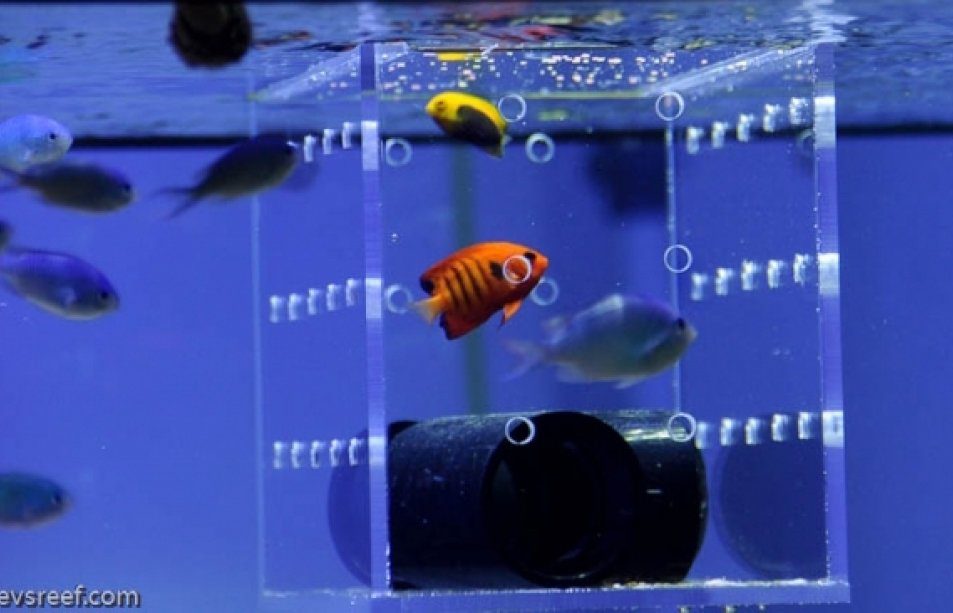Acclimation boxes are vital yet often underutilized tools for integrating new fish into existing aquarium setups. I was once skeptical of their effectiveness myself and understand if you’re not fully convinced yet. So, let’s explore how beneficial this simple clear box can be.
The process involves placing the acclimation box inside your aquarium and then adding the new fish to the box. A couple of PVC pieces inside provide hiding spots, allowing the fish to feel secure. You can also feed the fish directly in the box. Typically, after a 2-3 day period—though we’ll discuss timing more shortly—you can release the newcomer into the general tank population. This method helps mitigate potential aggression and prevents injuries by allowing established fish to visually familiarize themselves with the newcomer without physical contact, thus facilitating a smoother integration of social hierarchies.

It’s important to note, however, that the acclimation box is not a magical fix-it tool. It cannot make inherently incompatible species coexist peacefully. But, it does greatly aid in mixing similar species that might not always interact harmoniously. As an avid wrasse-keeper, I consistently use an acclimation box and highly recommend a proper quarantine process before introducing new fish to your display tank.
When selecting an acclimation box, functionality should trump aesthetics. Consider the lid mechanism (whether hinged or sliding) and how the box attaches to the tank (using suction cups or hanging clips). No single box suits every tank, so choose one that fits your specific needs. My preference is for boxes with an opaque bottom, as transparent bottoms can sometimes stress the fish trying to escape through what they perceive as open space.
Using the box is straightforward, but the key is diligent observation. Once the new fish is in the box, allow some time for both the new and established fish to adjust. I often observe from across the room; it’s easy to spot when an established fish is not taking well to the newcomer. You might see the fish approach the box and display or flash colors, which is normal to some extent. However, if aggression such as attempting to nip through the box occurs, it indicates potential incompatibility, necessitating patience over the next few days.
Typically, I aim for a 2-3 day acclimation period, though if signs of aggression persist beyond three days, I continue to monitor daily, ready with a contingency plan should conditions not improve by day five. It’s crucial to have a backup plan, such as keeping the quarantine system ready, in case the new fish or the aggressor needs to be isolated.
In my experience with wrasses, situations requiring the box beyond three days are rare. The difference it makes is often remarkable, with aggressive behavior usually subsiding by the third day. Without the box, the outcome could have been much less favorable.
Consider giving an acclimation box a try on your next addition—your fish and your nerves will thank you for the less stressful introduction!




